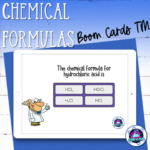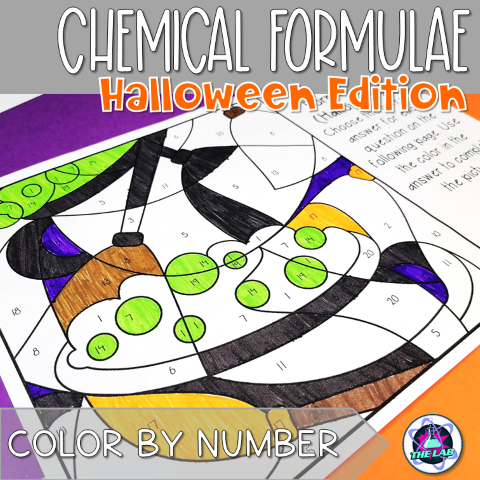Writing chemical formulas and equations is often the moment when many students feel like “real scientists”. Once they get it, they love it. Getting there, however, is often a struggle. Personally, I love teaching my students how to write chemical formulas and equations. Over the years, I’ve tried different approaches. Here are some of my favorite tips and tricks.
1. Get creative!
Channel your students’ creativity by asking them to visually represent chemical equations as artwork. Let them draw caricatures of atoms bonding and rearranging. I’ve found this to work really well with Middle School students.
2. Bring out the Lego!
Imagine atoms as colorful Lego bricks coming together to form molecules. Each element is a different colored brick, and students can physically build chemical formulas with these “Lego atoms.” This hands-on approach makes abstract concepts tangible and helps them visualize how elements combine to create compounds. And let’s be honest, who doesn’t like playing with Lego? I love this set from Amazon for this activity.
3. Learning from mistakes
Celebrate mistakes as part of the learning journey. Share some common misconceptions about writing chemical formulas or balancing equations and have students identify where the errors lie. Learning through errors makes the concepts stick better.
4. Important information
One of the most successful tools that I’ve implemented in all of my chemistry classes is the infamous “Green Page”. I’ve created a one-page document that summarizes all the key information that students need to write chemical formulas. It includes valencies for single ions as well as polyatomic ions, a list of diatomic molecules and much more. I copy it on bright green paper and it lives at the front of their chemistry files. In the beginning, they will constantly refer to this green page, but over time they start to remember the information and use it less and less. I will often hear students reminding each other that specific information is on the green page!
You can find this page together with some practice problems in my store.
5. Repeat! Repeat! Repeat!… And mix it up!
Practice makes perfect. And that is very true when it comes to writing chemical formulas. I tell my students that they are learning a new language and they need to be practising it continuously. I try to keep it fun by using activities such as Boom Cards and Color-by-Numbers.


Have fun teaching chemical formulas and equations!
Happy teaching!

*Contains affiliate links

